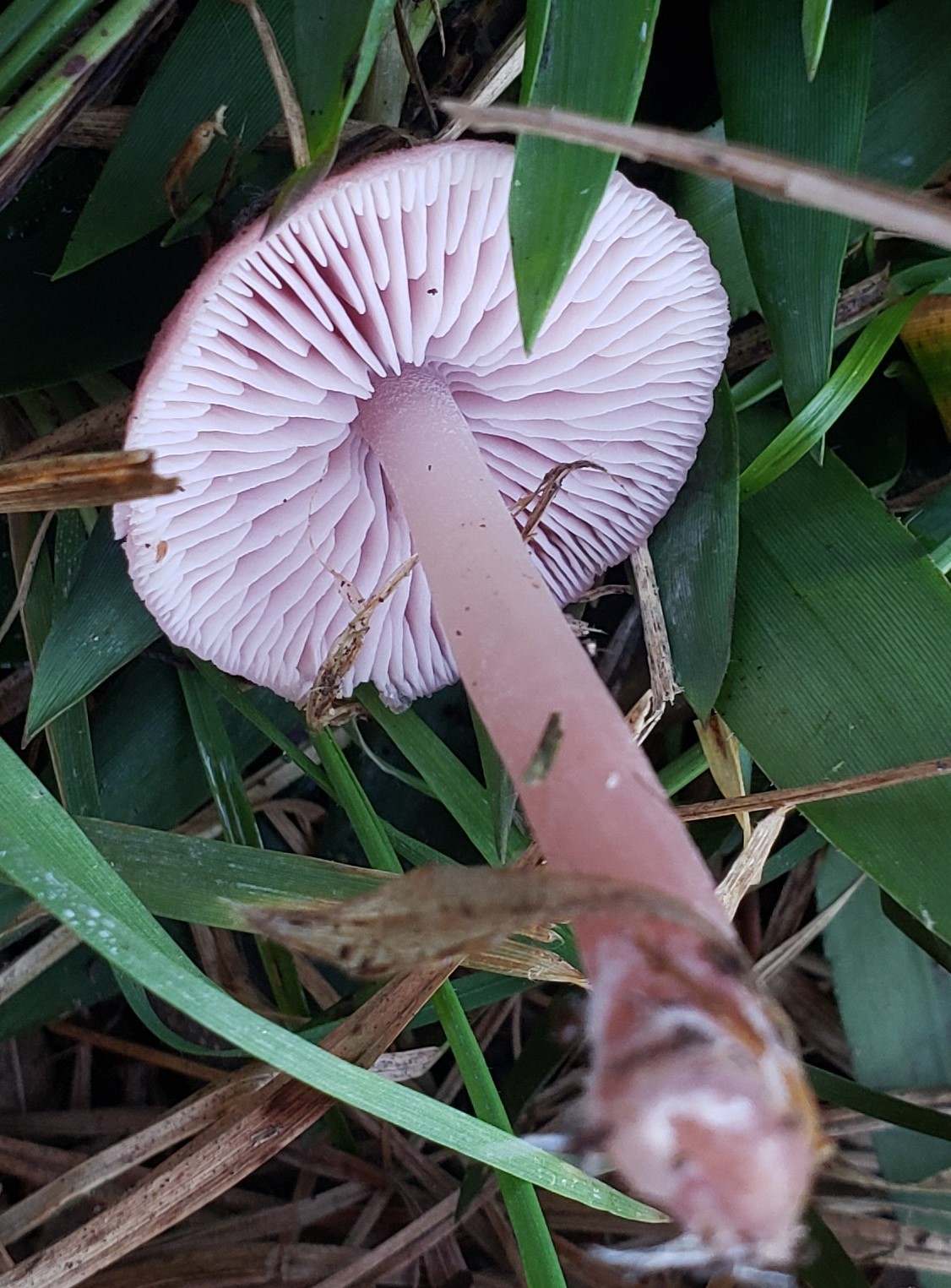Map Snapshot






20 Records
Status
Found solitary or in small groups on ground in hardwood or coniferous forests.
Description
Cap: Various shades of pink, purple, lilac; convex to almost flat; odor of radishes. Gills: Whitish, purplish, close. Stalk: Color same as cap or paler, flattened/twisted, base somewhat enlarged. (J. Solem, pers. comm.)
Seasonality Snapshot
Source: Wikipedia
| Mycena pura | |
|---|---|

| |
| Scientific classification | |
| Domain: | Eukaryota |
| Kingdom: | Fungi |
| Division: | Basidiomycota |
| Class: | Agaricomycetes |
| Order: | Agaricales |
| Family: | Mycenaceae |
| Genus: | Mycena |
| Species: | M. pura
|
| Binomial name | |
| Mycena pura | |
| Mycena pura | |
|---|---|
| Gills on hymenium | |
| Cap is flat | |
| Hymenium is adnexed | |
| Stipe is bare | |
| Spore print is white | |
| Ecology is saprotrophic | |
| Edibility is poisonous | |
Mycena pura, commonly known as the lilac mycena,[1] lilac bonnet,[2] is a species of mushroom in the family Mycenaceae. First called Agaricus prunus in 1794 by Christian Hendrik Persoon, it was assigned its current name in 1871 by German Paul Kummer.[3] Mycena pura is known to bioaccumulate the element boron.[4]
Description
[edit]Mycena pura is a tiny to medium-sized mushroom with a radish-like scent that can grow in a variety of hues, frequently with purple undertones. It inhabits places with rich soil that are both open and wooded. The cap is violet to purple when young but can change color with age. It can be convex, flat, or bell-shaped. The gills are pale or pinkish in color and get cross veins as they age. The stem is identical to the cap, hollow, and the same shade. There is no ring on the mushroom. It is widely dispersed across North America and can be found beneath conifers or occasionally hardwoods as decomposing forest litter. Given that it includes the toxin muscarine, it should not be consumed. M. pura does not appear to have any psychedelic characteristics.[5]
The cap ranges from 0.79 to 2.36 inches (2 to 6 cm) in size. The stem is 1.57 to 3.94 inches (4 to 10 cm) long and 0.08 to 0.24 inches (2 to 6 mm) thick.[5] The spores are white.[6]
Similar species include Clitocybe nuda, Laccaria amethysteo-occidentalis, and M. purpureofusca.[6]
Bioactive compounds
[edit][7]Mycena pura contains the chemical puraquinonic acid, a sesquiterpene. This compound induces mammalian cells (specifically, the cell line HL60) to differentiate into granulocyte- or macrophage-like cells. The fungus also contains the mycotoxin muscarine, and the antifungal metabolite strobilurin D, the latter previously found in Cyphellopsis anomala.[8] Despite the presence of these toxins,[9] some guides list M. pura as edible.[10]
Gallery
[edit]See also
[edit]References
[edit]- ^ Arora, David (1986). Mushrooms demystified: a comprehensive guide to the fleshy fungi (Second ed.). Berkeley: Ten Speed Press. ISBN 978-0-89815-169-5.
- ^ "Recommended English Names for Fungi in the UK" (PDF). British Mycological Society. Archived from the original (PDF) on 2011-07-16.
- ^ Kummer P. (1871). Der Führer in die Pilzkunde. Zerbst. p. 107.
- ^ Vetter Y. (1995). "Boron content of edible mushrooms of Hungary". Zeitschrift für Lebensmittel-Untersuchung und -Forschung. 201 (6): 524–27. doi:10.1007/BF01201576. PMID 8585328. S2CID 82014966.
- ^ a b "Mycena pura: The Ultimate Mushroom Guide". Mushroom Identification - Ultimate Mushroom Library. Retrieved 2023-04-06.
- ^ a b Davis, R. Michael; Sommer, Robert; Menge, John A. (2012). Field Guide to Mushrooms of Western North America. Berkeley: University of California Press. pp. 181–182. ISBN 978-0-520-95360-4. OCLC 797915861.
- ^ Munuswamy, Kumar; Kaviyarasan, Venkatesan (June 2012). "Few common poisonous mushrooms of Kolli Hills, South India". ResearchGate.
- ^ Becker U, Erkel G, Anke T, Sterner O (1997). "Puraquinonic acid, a novel inducer of differentiation of human HL-60 promyelocytic leukemia cells from Mycena pura (Pers. Ex Fr.)". Natural Product Research. 9 (3): 229–36. doi:10.1080/10575639708048319.
- ^ Miller Jr., Orson K.; Miller, Hope H. (2006). North American Mushrooms: A Field Guide to Edible and Inedible Fungi. Guilford, CN: FalconGuide. p. 169. ISBN 978-0-7627-3109-1.
- ^ Phillips, Roger (2010) [2005]. Mushrooms and Other Fungi of North America. Buffalo, NY: Firefly Books. p. 95. ISBN 978-1-55407-651-2.
 Media related to Mycena pura at Wikimedia Commons
Media related to Mycena pura at Wikimedia Commons
















